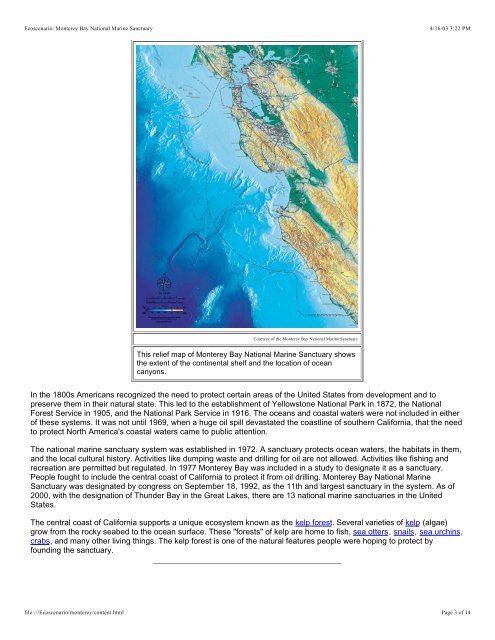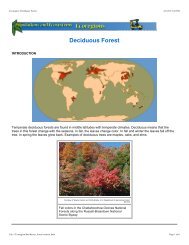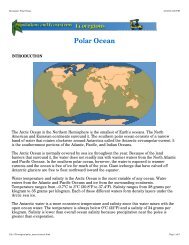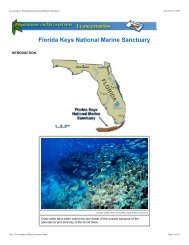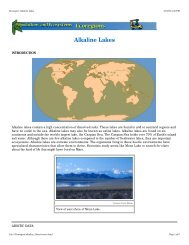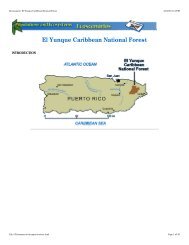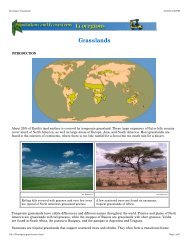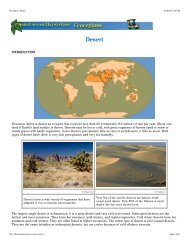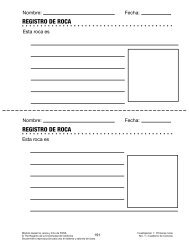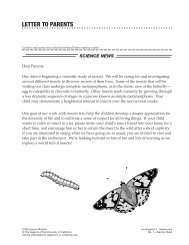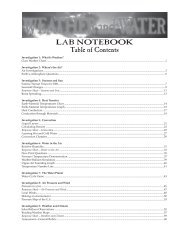Ecoscenarios Combined - FOSSweb
Ecoscenarios Combined - FOSSweb
Ecoscenarios Combined - FOSSweb
You also want an ePaper? Increase the reach of your titles
YUMPU automatically turns print PDFs into web optimized ePapers that Google loves.
Ecoscenario: Monterey Bay National Marine Sanctuary<br />
4/16/03 3:22 PM<br />
Courtesy of the Monterey Bay National Marine Sanctuary<br />
This relief map of Monterey Bay National Marine Sanctuary shows<br />
the extent of the continental shelf and the location of ocean<br />
canyons.<br />
In the 1800s Americans recognized the need to protect certain areas of the United States from development and to<br />
preserve them in their natural state. This led to the establishment of Yellowstone National Park in 1872, the National<br />
Forest Service in 1905, and the National Park Service in 1916. The oceans and coastal waters were not included in either<br />
of these systems. It was not until 1969, when a huge oil spill devastated the coastline of southern California, that the need<br />
to protect North America's coastal waters came to public attention.<br />
The national marine sanctuary system was established in 1972. A sanctuary protects ocean waters, the habitats in them,<br />
and the local cultural history. Activities like dumping waste and drilling for oil are not allowed. Activities like fishing and<br />
recreation are permitted but regulated. In 1977 Monterey Bay was included in a study to designate it as a sanctuary.<br />
People fought to include the central coast of California to protect it from oil drilling. Monterey Bay National Marine<br />
Sanctuary was designated by congress on September 18, 1992, as the 11th and largest sanctuary in the system. As of<br />
2000, with the designation of Thunder Bay in the Great Lakes, there are 13 national marine sanctuaries in the United<br />
States.<br />
The central coast of California supports a unique ecosystem known as the kelp forest. Several varieties of kelp (algae)<br />
grow from the rocky seabed to the ocean surface. These "forests" of kelp are home to fish, sea otters, snails, sea urchins,<br />
crabs, and many other living things. The kelp forest is one of the natural features people were hoping to protect by<br />
founding the sanctuary.<br />
file:///Ecoscenario/monterey/content.html<br />
Page 3 of 14


